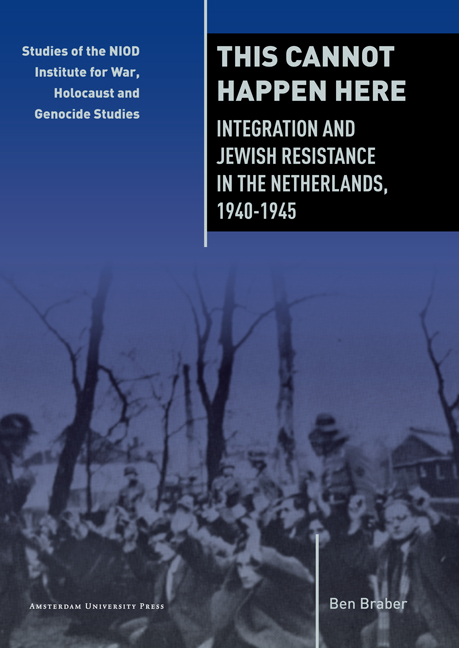1 - Attitudes Towards Jews and Jewish Responses
Published online by Cambridge University Press: 15 January 2021
Summary
In 1916 the Socialist trade union leader Isaäc Goudsmit asked to be present at the founding meeting of a local branch of the Dutch Roman Catholic Union of Bakers and Workers in the Cacao, Chocolate and Sugar Industry. His request was refused, because it was said about him: “[…] aan 's mans neus kunt gij zien, dat hij niet van 't houtje is” (Looking at his nose will tell you he is not a Roman Catholic). This reference to a person's Jewishness, of which the shape of his nose was said to bear witness, was typical of negative attitudes towards Jews in the general Dutch population. These attitudes developed over time, sometimes quickly and notably so during the 1930s when they once again made Jews stand out.
A numerically declining and ageing group
Jews formed only a very small, yet highly concentrated proportion of the Dutch population. It was also a numerically declining and ageing group. The last prewar census in 1930 recorded 111,917 persons in the Netherlands as members of a Jewish religious congregation. That was about 3,000 fewer than in 1920. The Jewish proportion of the total Dutch population had fallen too – from 2.15 per cent in 1889 to 1.41 per cent in 1930. Among the factors that caused the numerical and proportional decline was a birth rate that fell quicker among Jews than non-Jews. On the eve of the Second World War the Jews in the Netherlands also constituted an ageing group. The share of the cohort consisting of persons up to 10 years old in the Jewish population fell from 16 per cent in 1920 to 14 per cent in 1930, while in the total population it declined from 23 to 21 per cent. Most of the Jews in the Netherlands in 1930 were native born. However, by 1940 their number was increased by some 15,000 refugees from Germany, Austria and German-occupied countries, who had found a place of residence in the Netherlands.
In terms of size, proportion of the total population and composition the Jews in the Netherlands differed from Jews in Germany, Belgium, France and Italy.
- Type
- Chapter
- Information
- This Cannot Happen HereIntegration and Jewish Resistance in the Netherlands, 1940–1945, pp. 17 - 38Publisher: Amsterdam University PressPrint publication year: 2013



